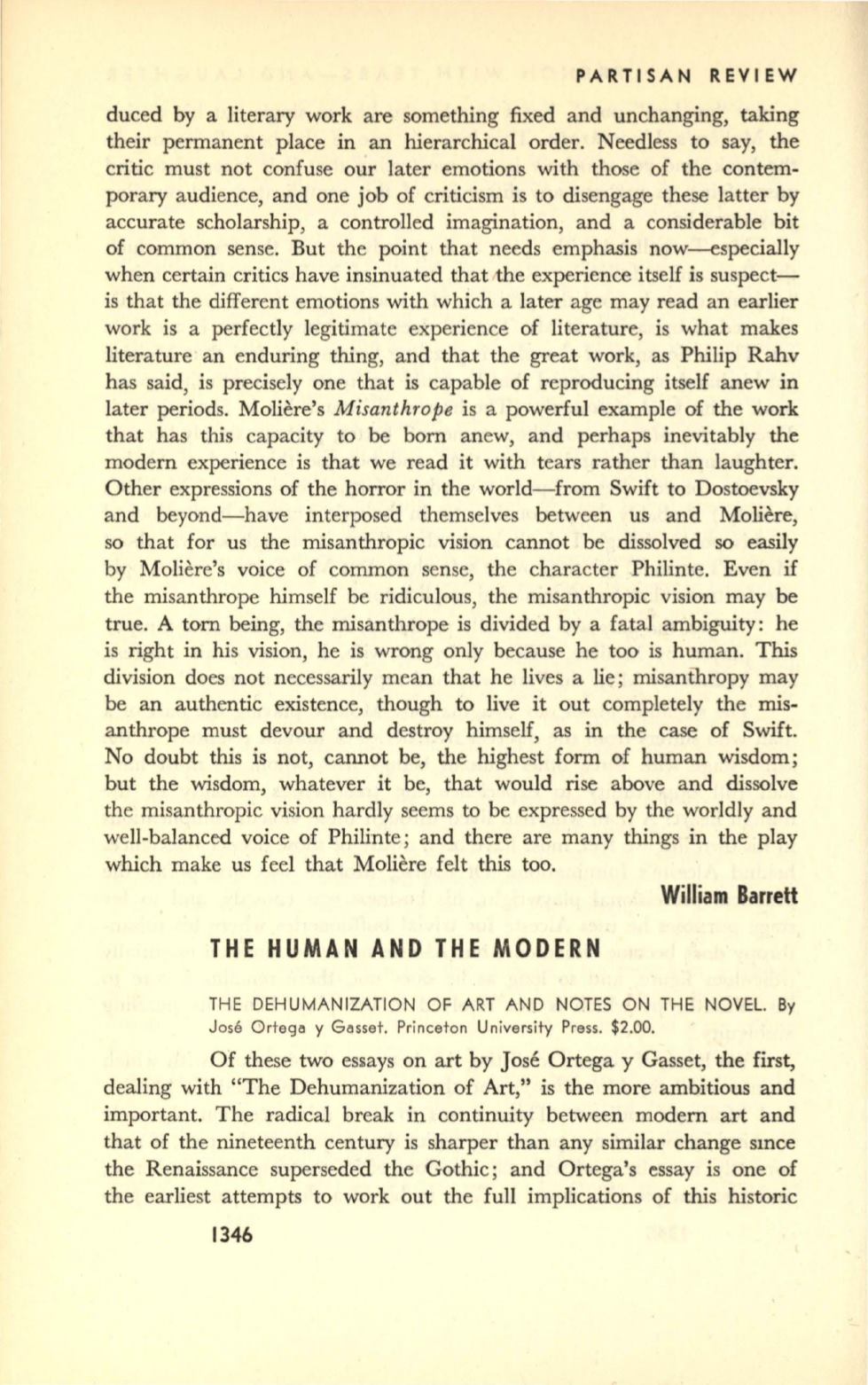
PARTISAN REVIEW
duced by a literary work are something fixed and unchanging, taking
their permanent place
in
an hierarchical order. Needless to say, the
critic must not confuse our later emotions with those of the contem–
porary audience, and one job of criticism is to disengage these latter by
accurate scholarship, a controlled imagination, and a considerable bit
of common sense. But the point that needs emphasis now-especially
when certain critics have insinuated that
~the
experience itself is suspect–
is that the different emotions with which a later age may read an earlier
work is a perfectly legitimate experience of literature, is what makes
literature an enduring thing, and that the great work, as Philip Rahv
has said, is precisely one that is capable of reproducing itself anew in
later periods. Moliere's
Misanthrope
is a powerful example of the work
that has this capacity to be born anew, and perhaps inevitably the
modern experience is that we read it with tears rather than laughter.
Other expressions of the horror in the world-from Swift to Dostoevsky
and beyond-have interposed themselves between us and Moliere,
so that for us the misanthropic vision cannot be dissolved so easily
by Moliere's voice of common sense, the character Philinte. Even if
the misanthrope himself be ridiculous, the misanthropic vision may be
true. A torn being, the misanthrope is divided by a fatal ambiguity: he
is right in his vision, he is wrong only because he too is human. This
division does not necessarily mean that he lives a lie; misanthropy may
be an authentic existence, though to live it out completely the mis–
anthrope must devour and destroy himself, as in the case of Swift.
No doubt this is not, cannot be, the highest form of human wisdom;
but the wisdom, whatever it be, that would rise above and dissolve
the misanthropic vision hardly seems
to
be expressed by the worldly and
well-balanced voice of Philinte; and there are many things in the play
which make us feel that Moliere felt
this
too.
William Barrett
THE HUMAN AND THE MODERN
THE DEHUMANIZATION OF ART AND NOTES ON THE NOVEL. By
Jose Ortego
y
Gosset. Princeton University Press. $2.00.
Of these two essays on art by Jose Ortega
y
Gasset, the first,
dealing with "The Dehumanization of Art," is the more ambitious and
important. The radical break in continuity between modern art and
that of the nineteenth century is sharper than any similar change smce
the Renaissance superseded the Gothic; and Ortega's essay is one of
the earliest attempts to work out the full implications of this historic
1346


